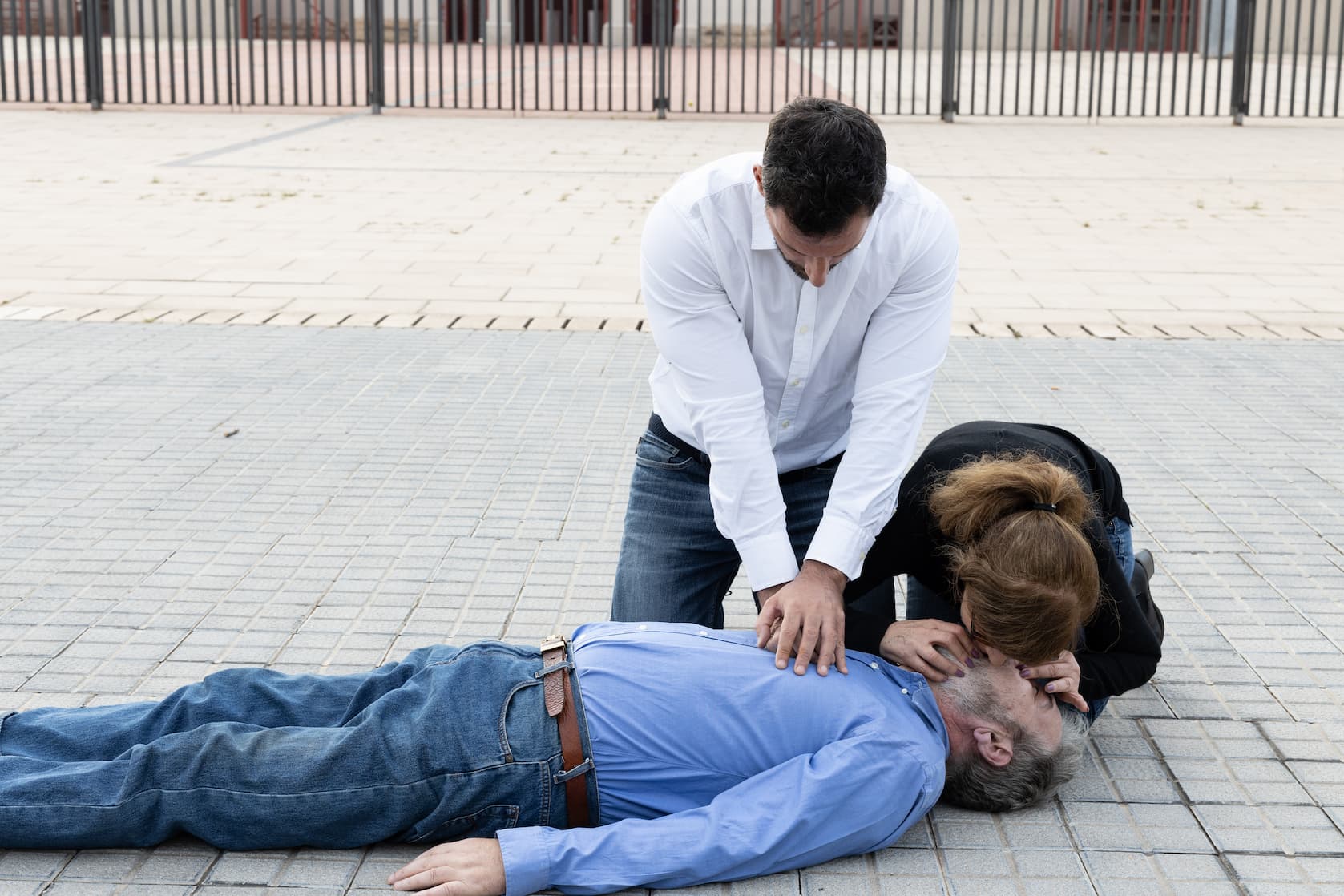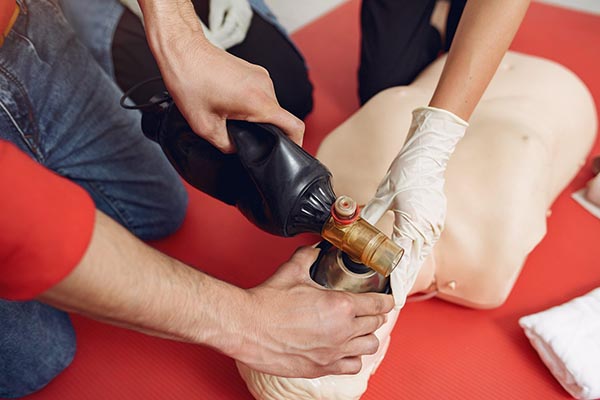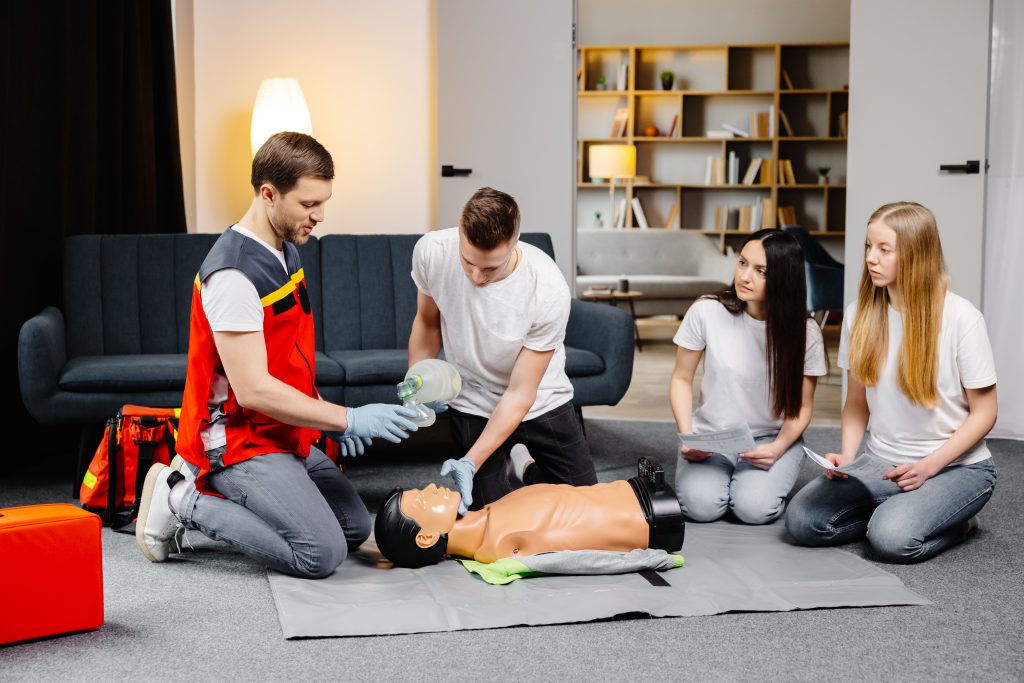Good Samaritan Law CPR Protection for the Certified Bystander

The Fearless Responder: The One Fear That Shouldn’t Hold You Back
It is a moment you train for: a person collapses, their life hanging in the balance. As an AHA-certified rescuer—whether you are a healthcare professional off the clock or a citizen with a recent CPR card—you know the steps to save a life. You know the importance of high-quality compressions and timely defibrillation.
Yet, a subtle, often paralyzing fear can sometimes take root: “What if I hurt them? Can I be sued?”
This concern, fueled by dramatic legal myths, is a primary reason bystanders hesitate. This delay is catastrophic; for every minute CPR is delayed, the victim’s chance of survival drops by approximately 10%. This is precisely why Good Samaritan Laws were created.
These state-level statutes are foundational to public health. They were created with a single, crucial purpose: to shield well-meaning, voluntary rescuers from civil liability.
In short, they protect you from being sued if your attempt to save a life, performed in good faith and within the scope of your training, results in an unintended injury.
For anyone holding a certification—especially the gold standard of training, the American Heart Association (AHA) BLS or Heartsaver card—understanding this law is as critical as knowing the compression rate. When you understand your legal protection, you gain the confidence to act decisively when a life depends on it.
This comprehensive guide will dissect the core principles of Good Samaritan Laws, clarify what they cover, and explain why your certified training is your best legal defense.
Your Legal Shield: Dissecting the Five Core Elements of Good Samaritan Immunity

Good Samaritan Laws are not blanket immunity from all actions. They are a specific legal defense that applies only when a set of clearly defined conditions are met. These conditions ensure the law is protecting genuine, selfless acts of rescue, not reckless or malicious behavior.
The vast majority of state statutes across the U.S. require the following critical elements to be present for the law’s protection to apply:
1. The Situation Must Be an Emergency (Imminent Peril)
The law is designed for immediate, life-threatening crises outside of a typical medical setting.
- Covered Examples: Cardiac arrest, a severe choking incident, a massive stroke, or a victim injured at the scene of an accident.
- The Intent: The goal is to encourage rapid intervention when time is the most critical factor. If the situation is not an imminent peril (e.g., helping someone stand up from a minor fall), the actions may be viewed as unnecessary and could negate the law’s protection. The scene must clearly present an urgent risk of death or serious injury.
2. The Act Must Be Voluntary (No Pre-Existing Duty)
The person offering aid must not have a pre-existing legal duty or relationship that obligates them to help.
- The Lay Rescuer: A certified layperson who stops to help at a restaurant or on the street is acting voluntarily and is protected.
- The Professional Distinction: An on-duty EMT, firefighter, or hospital employee, who is being paid to respond, has a duty to act. Their legal liability is governed by different, professional standards (often malpractice insurance), and they are not typically covered by Good Samaritan immunity for actions within their employment scope.
- The Off-Duty Professional: Crucially, a physician or nurse who stops to help while off-duty and without compensation is generally covered, as they are acting voluntarily as a bystander.
3. Care Must Be Rendered Without Expectation of Compensation
The Good Samaritan must be acting altruistically, with no intent to ask for or accept payment for the emergency aid provided.
- If the rescuer accepts payment for the act, the court may view them as operating under a professional contract or business arrangement, which instantly nullifies the protection.
- This element firmly establishes that the motivation must be selfless public assistance. Accepting a small token of gratitude is usually acceptable, but any request or expectation of payment negates the law’s protection.
4. The Rescuer Must Act in Good Faith
This is the most fundamental element, referring to the rescuer’s honest and sincere intention to help.
- Defining Good Faith: It means acting without malicious intent, without the desire to exploit the situation, and without a conscious intent to cause harm.
- The entire legal framework of the Good Samaritan Law rests on the premise of protecting genuinely kind acts. Your training certificate serves as strong evidence of your intent to do good.
5. Consent Must Be Obtained or Implied
Consent is always required before rendering aid, but the law recognizes exceptions in life-and-death situations.
- Implied Consent: In a true emergency, such as a victim who is unconscious, unresponsive, or otherwise incapable of communication, implied consent is legally assumed. The law presumes any reasonable person would want to be saved from death.
- Explicit Refusal: If a conscious, mentally competent adult victim explicitly refuses care, the rescuer must honor that refusal to remain protected. Continuing care against the victim’s will could be considered battery.
The Core Distinction: Ordinary Negligence vs. Gross Negligence
The greatest fear for a rescuer is making a mistake that causes harm. Good Samaritan Laws are designed to eliminate the legal risk associated with reasonable mistakes. This rests on the difference between two types of negligence:
- Ordinary Negligence (Protected): Simple mistakes, errors in judgment, or minor carelessness that a reasonable person might make in a stressful, life-or-death situation. This includes things like the inevitable breakage of a rib during a high-quality chest compression.
- Gross Negligence (Not Protected): Extreme, reckless, or willful conduct that shows a conscious and voluntary disregard for the safety of others. This is behavior far outside the standard of care that creates a high probability of harm.
Why Accidental Injuries during CPR are Protected
The textbook case of accidental injury during CPR is a broken rib or a fractured sternum. Medically and legally, this is considered a consequence of the successful delivery of high-quality compressions necessary to pump blood and save a life.
- Prioritizing Life: The law recognizes that the priority in cardiac arrest is restoring circulation to the brain. A potential injury to the ribs is far less severe than death from a lack of oxygen.
- The Shield: So long as you were performing the skill as taught in your AHA course—compressing hard and fast—the law protects you from civil liability for this ordinary negligence. Your action was necessary and reasonable under the circumstances.
Conversely, an act of gross negligence would be providing care far beyond your training, such as a layperson attempting to intubate a victim, or dragging an accident victim with suspected spinal injuries across a parking lot when the immediate scene was safe. Such reckless disregard for a victim’s well-being is not protected.
The AHA Advantage: Why Certification is Your Strongest Legal Defense
For a Good Samaritan Law defense to hold up in court, the rescuer must prove they acted reasonably and within the scope of their training. This is where your AHA certification becomes your most powerful legal asset.
Establishing the Standard of Care
Your certification defines the “standard of care” you are held to. When your actions are scrutinized in court, a judge or jury will ask: “Did the rescuer act as a reasonably prudent person with similar training would have acted?”
- Uncertified Rescuer: An uncertified person is judged against the basic standard of a “reasonable, prudent layperson.” This standard is vague and harder to defend because there is no documented proof of skill or knowledge.
- AHA Certified Rescuer: A person with an official AHA BLS Provider or Heartsaver certification is judged against the established, rigorous, and evidence-based standards set by the American Heart Association.
When a claim is brought to court, the rescuer’s documentation serves as incontrovertible proof that:
- You Were Trained: You possess verifiable documentation (the official AHA eCard) showing you have completed a standardized, nationally recognized course.
- You Were Competent: You successfully passed a mandatory hands-on skills test monitored by a certified instructor, validating your ability to perform high-quality CPR and use an AED.
- You Acted Within Scope: By performing the exact, proven techniques taught in your course (compression-to-ventilation ratios, correct rate/depth, AED deployment), you demonstrate that your actions were reasonable and well-informed, drastically reducing the possibility of a finding of gross negligence.
In essence, your AHA card is your legal evidence that you did not act recklessly, but with a trained knowledge base endorsed by the leading authority on resuscitation science.
CPR and the AED: Specific Legal Protections for Defibrillation
Recognizing the life-saving potential of the Automated External Defibrillator (AED), virtually all 50 states have specific statutes that provide even more explicit protection for its use, especially when coupled with CPR.
Widespread Immunity for AED Use
These statutes often extend the civil immunity to a larger group of people and entities to encourage the placement and use of the device:
- The AED User: Protection is granted to the individual who uses the AED, provided they acted according to the device’s prompts and their training.
- The AED Owner/Site: Protection is often extended to the business, school, or organization that purchased and placed the AED.
- The Training Provider: Crucially, many laws extend liability protection to the entity (like our certified AHA Training Center) and the licensed medical director who provides the CPR and AED training.
The law recognizes that an AED is a machine designed to be used by the public. Since the AED provides clear, automated voice prompts, using the device is a procedure that falls well within the “scope of training” for any AHA-certified rescuer. The legal risk of using the device is minimal compared to the certainty of death without it. If the AED tells you to shock, and you do so after clearing the victim, you are protected.
The Final Verdict: Why Training Is Your Confident Call to Action
The fear of legal repercussion is a powerful, yet fundamentally misplaced, obstacle to saving a life. Good Samaritan Laws have been overwhelmingly successful in their mission to provide a firm legal foundation for heroic action.
The most effective, practical, and defensible way to ensure you are covered by these laws is to invest in certified, high-quality training. Your certification transforms you from a well-meaning amateur into a protected, reasonable, and competent rescuer. It is the documentation that eliminates the grey area around your “scope of training” and proves your commitment to life-saving techniques.
Don’t let legal myths dictate your response to an emergency. Get the gold standard of training that is recognized nationwide. Your AHA certification is your passport to confident, protected, and effective action. When the time comes, you will be prepared, protected by the law, and ready to be a hero.
Become the Protected Responder: Register for Your AHA Certification Today
You now know the legal truth: Good Samaritan protection is strongest when backed by certified training. Our certified American Heart Association (AHA) courses—from Basic Life Support (BLS) for healthcare providers to Heartsaver CPR AED for the public—ensure you meet the highest standard of care recognized by the law.
Don’t just be a bystander—be a protected rescuer.



